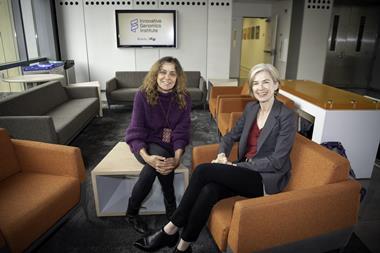Ethical, cultural and safety considerations are high priorities for researchers

The Third International Summit on Human Genome Editing at the Crick Institute in London, UK on 6–8 March was no regular scientific meeting. For starters, it took place in the shadow of the re-emergence of He Jiankui, who announced in 2018 that he had already used genome editing on human embryos for IVF, leading to the birth of twin baby girls. He had used the Crispr gene-editing technology to alter a gene called CCR5 in the hope of conferring resistance to HIV in the infants. The work did not have the proper authorisation and He was jailed for three years by the Chinese authorities for malpractice. But he has now begun circulating again, speaking at the University of Kent at Canterbury, UK, in February, and seems unrepentant about his actions, which were universally condemned by scientists working on genome editing. At one point it looked possible that he might attend the Crick event, but he did not.
What’s more, attendees had to walk past protestors bearing placards with slogans like ‘Stop designer babies’ and ‘Never again to eugenics’. The pressure group Stop Designer Babies called the summit an ‘uncritical feast of techno-hype’ that, by advocating the legalisation of human genetic modification (HGM), resurrects ‘the spectre of eugenics’. ‘Ordinary people must come together to resist the designer baby eugenics that these technocrats want to impose upon us’, they say. ‘There is no unmet medical need for HGM so why is this Summit even discussing it?’
But inside the meeting the story looked very different from such dystopian fears. Space was allotted for discussions of ethics and cultural considerations, from the roles of ‘biohackers’ and ‘community scientists’ to patient advocacy groups and the importance of cultural beliefs (such as those of the Maori community) in informing attitudes to genome editing. The conference was anything but narrow genomic boosterism. It also heard the moving testimony of Victoria Gray, the American woman whose life has been transformed by genetic modification of her blood cells to treat her sickle cell disease.
In this febrile ethical debate, there are two big distinctions to be made. One is between genome modification for therapeutics – for treating nasty conditions such as sickle-cell disease – and for enhancement. The latter is what concerns the likes of Stop Designer Babies, and rightly so, for it is surely socially fraught. But very few in the field see it as either desirable or feasible, because most of the traits one might want to enhance – intelligence say – have a complex inherited component involving very many genes that couldn’t be meaningfully altered by gene editing. In therapeutics, most of the conditions being targeted are monogenic: only one gene need be disrupted or altered, which makes tools like Crispr far more effective.
To allow any human genome editing does not obviously open the door to ‘designer babies’
The other distinction is between genome editing of somatic and germ cells. In the former case, exemplified by Gray’s treatment, changes are made to body cells that will not be inherited by offspring and so do not have implications for future generations. When effective alternatives do not exist, it is hard to see what objections there are to somatic genome editing to alleviate suffering – although important questions then remain about the equitability of and access to these treatments, which are currently very costly. Germ-line editing is much more controversial – some working in the field want it banned, and many agree with Jennifer Doudna, one of the Nobel-winning discoverers of the Crispr mechanism, that a moratorium is needed while we debate the ethics.
To allow any human genome editing does not, then, obviously open the door to ‘designer babies’, as some fear. But they are surely right to caution against the over-hasty embrace of high-tech, eye-catching solutions to problems that might have other answers (such as genetic screening of embryos to identify disease mutations). He’s 2018 stunt was reprehensible in part because it did not even target an otherwise unmet medical need (nor was it effective).
The immediate question is whether these editing methods are safe. Even with Crispr there is the danger of off-target edits. That’s one reason why even more precise tools using the Crispr-Cas9 DNA-snipping enzyme, as described at the summit by Harvard chemist David Liu, could make so much difference. While normal Crispr cleaves DNA in a sequence-specific manner, the repair job leaves a lot to chance. Liu has developed methods called base editing and prime editing that enable the exact replacement of one particular DNA base for another.1 Base editing has already proved effective in vivo for ‘correcting’ the sickle cell2 and Hutchinson–Gilford syndrome3 (which causes accelerated ageing) mutations in mice. It is now in human clinical trials for sickle-cell, thalassemia, leukaemia and other conditions. It’s widely suspected that Liu is heading for a Nobel eventually. If so, expect it to be in chemistry – for this is indeed chemistry of the highest order.
References
1 A V Anzalone et al, Nature, 2019, 576, 149 (DOI: 10.1038/s41586-019-1711-4)
2 G A Newby et al, Nature, 2021, 595, 295 (DOI: 10.1038/s41586-021-03609-w)
3 L W Koblan et al, Nature, 2021, 589, 608 (DOI: 10.1038/s41586-020-03086-7)












No comments yet